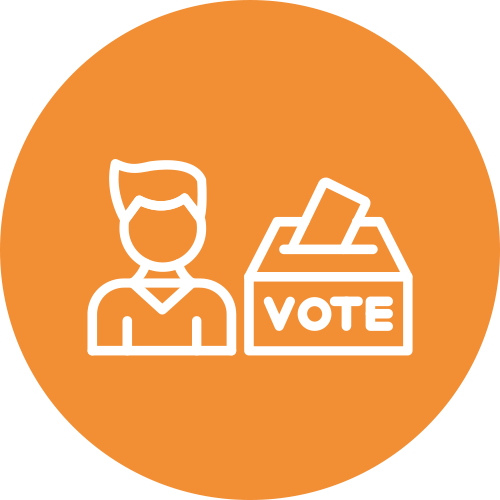In the modern era of politics, the advent of digital marketing has revolutionized how electoral campaigns are conducted. The state of Karnataka in India, known for its dynamic political landscape, has witnessed a significant transformation as political parties harness the power of digital marketing to engage with voters and shape public opinion.
As stated by the Election Commission of India, a total of 5.21+ crore audiences were eligible to cast a vote in the 2023 Assembly election held on 10th May across 224 constituencies of Karnataka. And the state witnessed record 72.67 voter turnouts (excluding home voting and postal ballots) this year as compared to 72.13 in 2018.
In fact, in the last few years, voter turnouts substantially impacted. And we can’t deny the influence of social media promotions, online campaigns, and email outreach as the “mantra of success” to attract potential audiences during election campaigns.
With a growing population and increasing internet penetration, Karnataka has become a battleground for political campaigns leveraging digital platforms’ vast reach and targeting capabilities. In this blog, we’ll delve deeper into the realm of digital marketing and political campaigns to uncover the untapped potential unknown to many audiences yet.
How Social Media Takes Center Stage In Political Landscape
In India, we can trace the rise of online promotional campaigns in 2014, when the Bharatiya Janata Party, for the first time, leveraged the potential of social media promotions for the General Election.
But, the idea was originally introduced by Barack Obama in 2007, which greatly reshaped the US political scene. The combined use of network marketing, email promotions, and display ads in the 2007 US election campaign led to so much influence that the use of digital promotions has been said to rise by 575% since 2012.
Well, ever since 2022, with the Election Commission of India (ECI) imposing restrictions on large-scale rallies and gatherings in many states during assembly elections, political parties are now turning to digital election campaign managers, designers, and specialized companies.

The Story Behind Enhanced Outreach Through Targeted Advertising
In the vibrant democracy of India, elections are celebrated as a momentous occasion where citizens eagerly participate in shaping the destiny of their nation. It’s a time when the electorate takes pride in their ability to influence the country’s future course through their votes. And when the media is considered the fourth pillar of democracy, the digital platform can impact the political landscape through targeted outreach.
Recognizing the evolving preferences of the electorate, political parties and candidates are increasingly embracing the digital marketing route to connect with the vast voter base. In such cases, digital marketing has emerged as a powerful tool that enables political parties and candidates to reach out to voters, disseminate their messages, and mobilize support more effectively than ever before.

We can take the example of the 2016 US Presidential Election when Donald Trump won the position. He clearly claims in front of the media that social media helped him to win the battleground.
Considering the Karnataka 2023 Assembly election scenario, the #CryPMPayCM Twitter campaigns run by the opposing party have gained the attention of millions of voters attention.
Furthermore, in anticipation of the upcoming Karnataka Assembly elections, the Bharatiya Janata Party (BJP) unveiled its inaugural campaign video in the month of April, titled ‘Modi Modi.’ Inspired by the award-winning song ‘Naatu Naatu’ from the movie RRR, the video showcases the collaborative efforts of the BJP government in Karnataka and the Central government, emphasizing the developmental work undertaken in the state.
So, it’s evident that the use of digital marketing in Indian elections goes beyond traditional campaign strategies. From live-streaming rallies and events to interactive awareness sessions, digital marketing opens up avenues for real-time engagement, fostering a sense of participation and empowerment among the electorate.
Online Platforms For Voter Engagement & Mobilization
Well, political parties and independent candidates are seeking the assistance of a top-tier digital media company in Bangalore and worldwide to design and promote their campaign materials ahead of the upcoming voting sessions.
Digital marketers generally utilize various audio and visual elements and digital banner posters aiming to engage voters across constituencies. However, digital election campaigns encompass more than just circulating political materials or animated content. They also involve reaching out to the electorate through online portals and social media and even utilizing LED screens in small towns, cities, and remote villages.
Moreover, digital marketing offers a cost-effective and efficient way to run campaigns, especially for local and small political parties who don’t have huge financial access. It offers a level-playing ground for all, enabling them to compete side by side with influential national parties.
In terms of mobilization and online voter engagement, we can witness the reality from the number of followers of national parties on popular social media platforms.
In fact, the electoral contest in the state is intensifying not only through roadshows and campaign rallies but also within WhatsApp groups, where political parties’ IT cells employ a team of content creators to disseminate propaganda videos.

How Digital Marketing Can Propel Your Political Campaign to Victory!
Analyzing the above facts and figures, running political campaigns through digital marketing has emerged as a game-changer in the political landscape, offering numerous benefits to candidates and parties. If you’re not convinced yet, here are 4 top unquestionable justifications to support the claims.

 Better Reach & Wider Audience Engagement
Better Reach & Wider Audience Engagement
 Engage Active Voters
Engage Active Voters
 Grab Audience Attention In One Go
Grab Audience Attention In One Go
 DSP Features Are Additional Advantage
DSP Features Are Additional Advantage
Programmatic advertising presents a powerful tool for political campaigns, enabling direct connections with voters across multiple devices while capturing their attention at the right time and place. By leveraging programmatic technology, campaigns can strategically target ideal voters based on various factors such as geolocation, congressional district, or contextual relevance, ensuring that messaging reaches receptive audiences.
In today’s digital age, most voters, especially Gen Z & Millennials, are actively engaged online; hence, digital marketers help political candidates comprehend their unique perspectives on the political landscape. By understanding these dynamics, candidates can tailor their advertising efforts for optimal results.
Presently, 6 out of 10 adults rely on digital channels as their primary source of information about upcoming elections. This presents a remarkable opportunity for political campaigns to reach their target audience precisely where they are most engaged – within the digital environment.
When implementing digital marketing for political campaigns, it’s crucial to collaborate with a suitable demand-side platform (DSP). An effective DSP should possess the necessary features (contextual targeting, a lookalike audience, geotargeting, CRM direct upload, etc.) and support to facilitate efficient campaign planning, launch, and optimization. Besides, multi-channel strategies are there to influence voter behavior earlier without hitting the election battleground.
Experience Win-win Political Campaign With Religh
As we wrap up, the intersection of digital marketing and Karnataka’s elections showcased the tremendous power of leveraging technology to engage with voters. The constructive use of social media and other digital platforms allowed political parties to establish direct and interactive connections with the electorate, which has been witnessed by the ever-growing voter turnouts since 2018.
If you want to leverage the best voter outreach strategy, contact us with the top-rated digital marketing agency in Bangalore, Religh Technologies. Our transformative approach amplified the reach of campaigns and fostered meaningful conversations and feedback loops.


